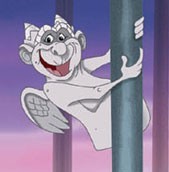

Take, for example, a film from the same studio released in the summer of 1996. When, however, you become wildly successful with critics and worldwide audiences, you can push yourselves and your target demographics. Being daring is risky enough when you're popular, let alone on death's door. The studio couldn't push the envelope because they were struggling to get by. But The Black Cauldron also arrived at a low point for Disney animation. A film in which a character called the Horned King strives to raise an army of the dead was simply too grim for the studio to handle. Even in the 1980s, there existed a cultural notion of what was and was not acceptable and expected from a "Disney movie". ) In the mid-1980s, when Jeffrey Katzenberg sat down to watch an early cut of The Black Cauldron, one of the concerns he had was that the film was too dark. In today's column, he discusses the 1996 film The Hunchback of Notre Dame. ( Revisiting the Renaissance is a bi-weekly series in which Josh Spiegel looks back at the history and making of the 13 films of the Disney Renaissance, released between 19.


 0 kommentar(er)
0 kommentar(er)
